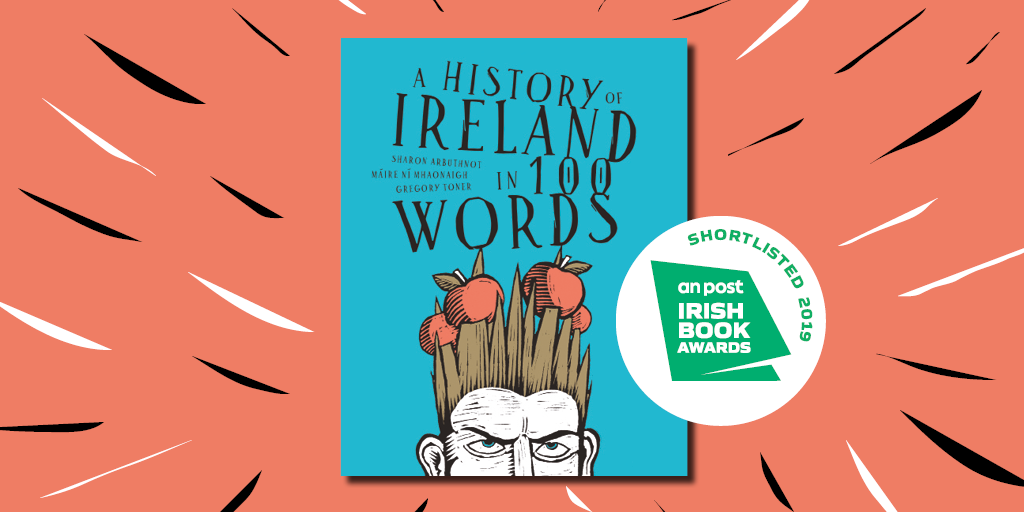
Queen Medb and the Irish language
11 November 2019To mark the publication of A history of Ireland in 100 words the DIB is publishing biographies of key figures from Irish history who make intriguing appearances in the new book. Queen Medb of Connacht, for example, shows up in entries as diverse as 'Carn', 'Fadhb' (problem solving) and 'Cara' (friendship).
Medb Chruachna
by John Carey
Medb Chruachna (‘of Cruacha’), queen of Connacht and traditionally believed to have flourished around the time of the birth of Christ, is one of the most prominent figures in the Ulster Cycle of heroic tales. Whether she is in any sense to be considered historical depends on the extent to which the Ulster Cycle as a whole reflects traditions relating to actual events; even those scholars who are prepared to acknowledge this as a possibility recognise that the existing narratives are essentially legendary in content.
These difficulties are compounded in Medb's case by the view, first propounded by Tomás Ó Máille in 1928, that Medb is an allegorical figure representing the sovereignty of Connacht; noting several resemblances between her and the Leinster queen Medb Lethderg, he held that the latter had in a similar way symbolised the kingship of Tara. A subsequent article by Rudolf Thurneysen took the further step of suggesting that Medb was in fact a goddess of kingship. This has become the consensus, although some scholars (notably, from very different standpoints, James Carney and Georges Dumézil) have continued to see her as a primarily literary figure, perhaps with a vestigial historical basis. Where certainty is unobtainable, it is best to keep an open mind: it may be noted that some of the most distinctive features in Medb's profile – her acting as a military leader, and conferring kingship on a succession of consorts – are historically attested in the careers of British queens of the first century A.D.
The earliest references to Medb are preserved in two obscure and allusive poems. ‘Verba Scáthaige’, purportedly addressed to the hero Cú-Chulainn, predicts his exploits during the great cattle-raid of Cooley and states that ‘Medb and Ailill boast’ of the distress that the raid has occasioned. The other poem, which begins with the line ‘Conailla Medb míchuru’, appears to state that Medb used sinister means to coerce Fergus son of Roach into acting as her ally in the raid. More detail is provided by numerous tales, ranging in date between the eighth and the twelfth centuries. Since the picture afforded by these sources is a broadly consistent one, it may be convenient to synthesise their testimony here.
Medb is said to have been one of the daughters of Eochaid Feidlech, king of Tara. She was first married to Conchobar son of Ness, king of Ulster, but subsequently abandoned him ‘through pride of mind’; the attendant ill-feeling was subsequently aggravated when Conchobar raped her. She was then married to several men, each of whom was king of Connacht for as long as he was her husband. Last in the series was Ailill son of Máta, whom she chose over other suitors because he was without fear, niggardliness, or jealousy. The two are always spoken of as joint rulers of Connacht; in several cases Medb appears as the dominant partner in the union.
Although different accounts of her motivation are given, Medb is consistently portrayed as the instigator and principal leader of the cattle-raid of Cooley, the central event of the Ulster Cycle. Fergus son of Roach was the most illustrious member of a band of Ulster exiles fighting on the Connacht side; to be certain of his allegiance, Medb took him as a lover. Their liaison continued even after the raid, till Ailill at last succumbed to jealousy and engineered Fergus's death. Medb is represented as having borne three sons to Fergus, ancestors of the Ciarraige, Corcu Mruad, and Conmaicne; her sons by Ailill, the ‘seven Maines’, do not figure in genealogical tradition. A few relatively late sources state that she was killed by her nephew Furbaide, acting to avenge the death of his own mother.
It should perhaps be noted in conclusion that an ogham inscription from Rathcroghan, traditionally held to have been the court of Medb and Ailill, reads ‘VRAICCI MAQI MEDVVI’, ‘[the stone] of Fraech son of Medb’. Even though the name Medb is here inflected as masculine, the association with Rathcroghan is striking: but it is difficult to see how this evidence, if significant, should be interpreted.
Sources:
R. Thurneysen, Die irische Helden- und Königsage bis zum 17. Jahrhundert (1921); T. Ó Máille, ‘Medb Chruachna’, Z.C.P., xvii (1927), 129–46; R. Thurneysen, ‘Allerlei Keltisches: 7. Göttin Medb?’, Z.C.P., xviii (1930), 108–10; idem, ‘Zur Göttin Medb’, Z.C.P., xix (1933), 352–3; R. A. S. Macalister, Corpus inscriptionum insularum Celticarum (2 vols, 1945), i, 16–17; O'Brien, Corpus geneal. Hib., 279; K. H. Jackson, The oldest Irish tradition: a window on the iron age (1964), 44–5; G. Dumézil, The destiny of a king, trans. A. Hiltebeitel (1973), 70–107; J. Carney, ‘The history of early Irish literature: the state of research’, G. Mac Eoin (ed.), Proceedings of the Sixth International Congress of Celtic Studies (1983), 113–30; P. L. Henry, ‘Verba Scáthaige’, Celtica, xxi (1990), 191–207; G. Olmsted, ‘The earliest narrative version of the Táin’, Emania, x (1992), 5–17; P. Kelly, ‘The Táin as literature’, J. P. Mallory (ed.), Aspects of the Táin (1992), 69–102: 77–88



